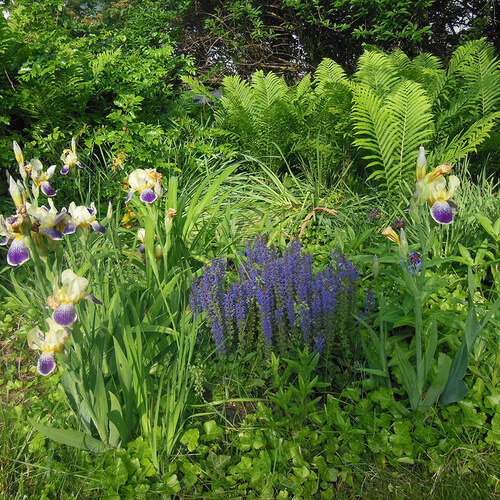Hi GPODers!
My favorite kind of spring cleaning is the type that shakes the dust off and uncovers gems that we lost in the bustle of busier times. When sorting through seed packets unveils the stash of heirloom seeds you forgot about, or digging through a garden shed unburies a pretty pot that you haven’t used in years. Or even better for me, when looking back at garden snapshots from past seasons makes you rediscover photos you intended on sending in to Garden Photo of the Day!
Nancy Mellen in Hingham, Massachusetts has shared scenes from her garden through the seasons (Blooming through the Winter, Hurray for Hellebores!, The Beauty of Old Roses, Gardening in Hingham, Fall Beauties From Nancy) as well as photos from her garden travels (Morikami Japanese Garden and Jardin du Luxembourg in August). But some photos still slip through the cracks. Thankfully, it’s never too late to share some colorful photos with the blog.
I just found a list of pictures that I meant to send last year. Better late than never. Enjoy… having the gardens of others to look at every morning, makes my day start with a smile.
Twinleaf (Jeffersonia diphylla, Zone 5–7) is a stunning spring ephemeral that produces pretty white blooms, but it is the interesting, “twin” leafs that give the plant its name and invite you to take a closer look. Native to North America, it is a plant that more gardeners should consider as habitat destruction and invasive species have made it endangered in some areas of its native range.
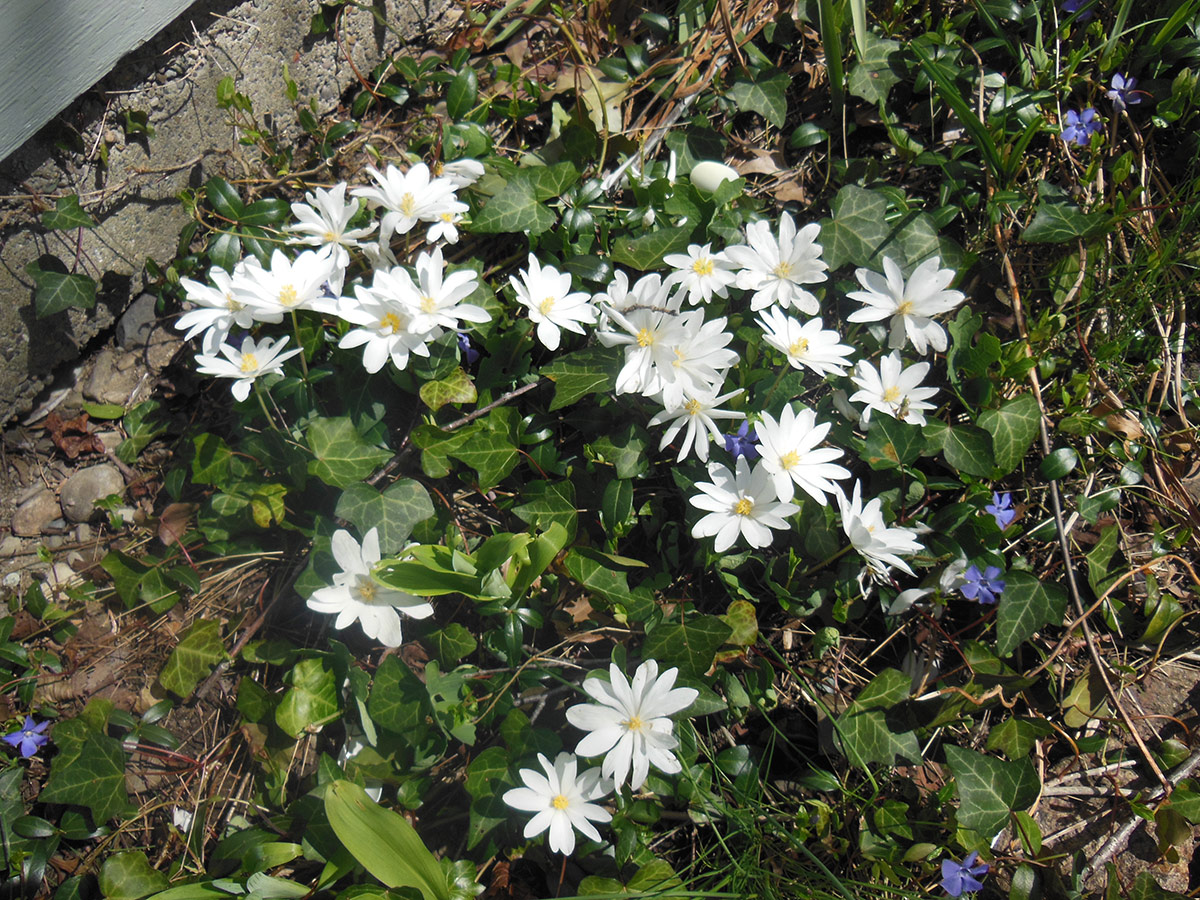 Another native spring ephemeral from Nancy’s collection, bloodroot (Sanguinaria canadensis, Zone 3–8) also gets its name from a unique characteristic. When cut, all parts of this plant produce a reddish-orange sap, but a slice through the roots will give you the best view of this colorful substance.
Another native spring ephemeral from Nancy’s collection, bloodroot (Sanguinaria canadensis, Zone 3–8) also gets its name from a unique characteristic. When cut, all parts of this plant produce a reddish-orange sap, but a slice through the roots will give you the best view of this colorful substance.
 Keeping with the theme of white-flowering natives, the dwarf trillium (Trillium pusillum, Zone 5–9) or dwarf wakerobin is a smaller relative to the great white trillium (T. grandiflorum, Zone 4–8) that has very similar flowers on a much larger scale. These flowers will also put on an additional show by aging to pale pink or lavender as the season progresses.
Keeping with the theme of white-flowering natives, the dwarf trillium (Trillium pusillum, Zone 5–9) or dwarf wakerobin is a smaller relative to the great white trillium (T. grandiflorum, Zone 4–8) that has very similar flowers on a much larger scale. These flowers will also put on an additional show by aging to pale pink or lavender as the season progresses.
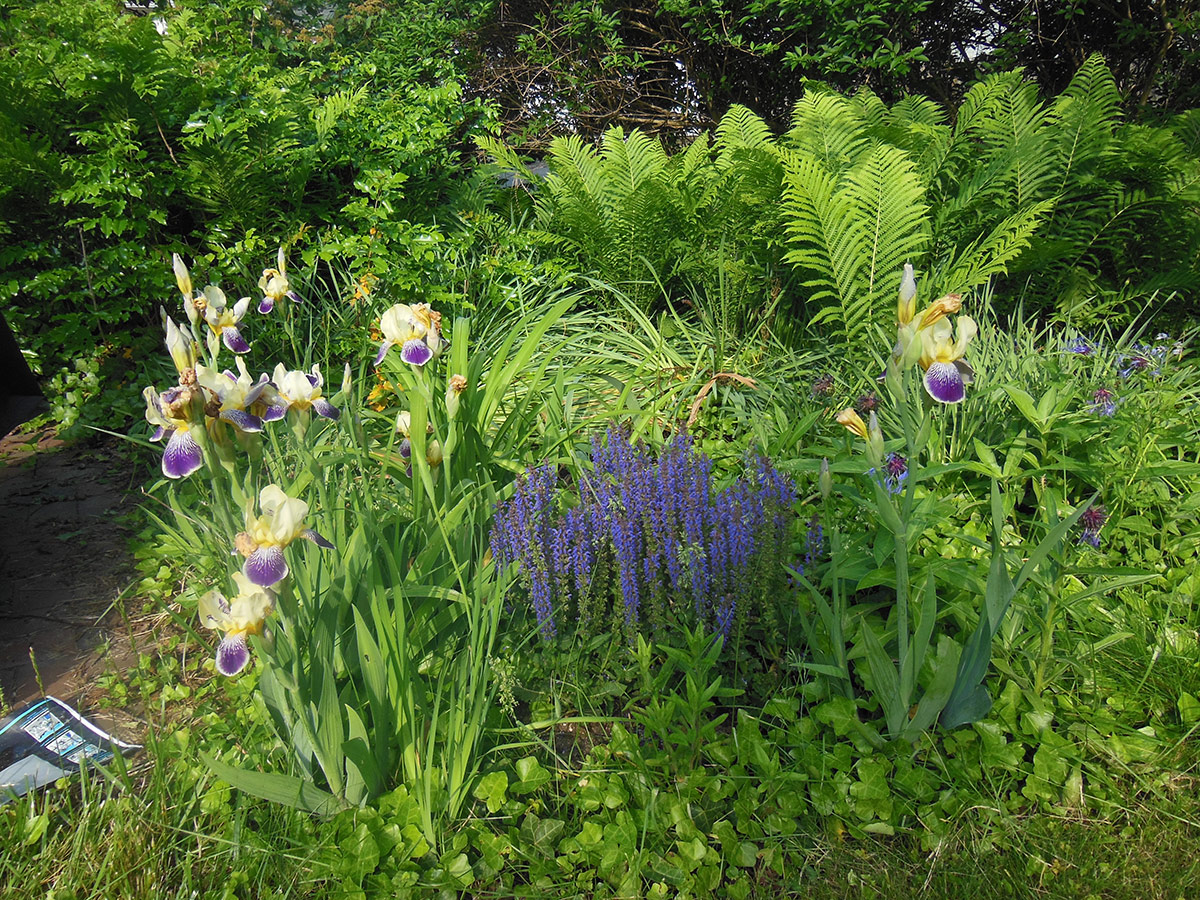 As spring continues on, Nancy’s garden erupts into a soothing sea of green. Lush foliage of various shapes, heights, and textures perform before other blooms burst. Early bloomers like bearded iris and salvia inject the space with some floral interest and bright purple.
As spring continues on, Nancy’s garden erupts into a soothing sea of green. Lush foliage of various shapes, heights, and textures perform before other blooms burst. Early bloomers like bearded iris and salvia inject the space with some floral interest and bright purple.
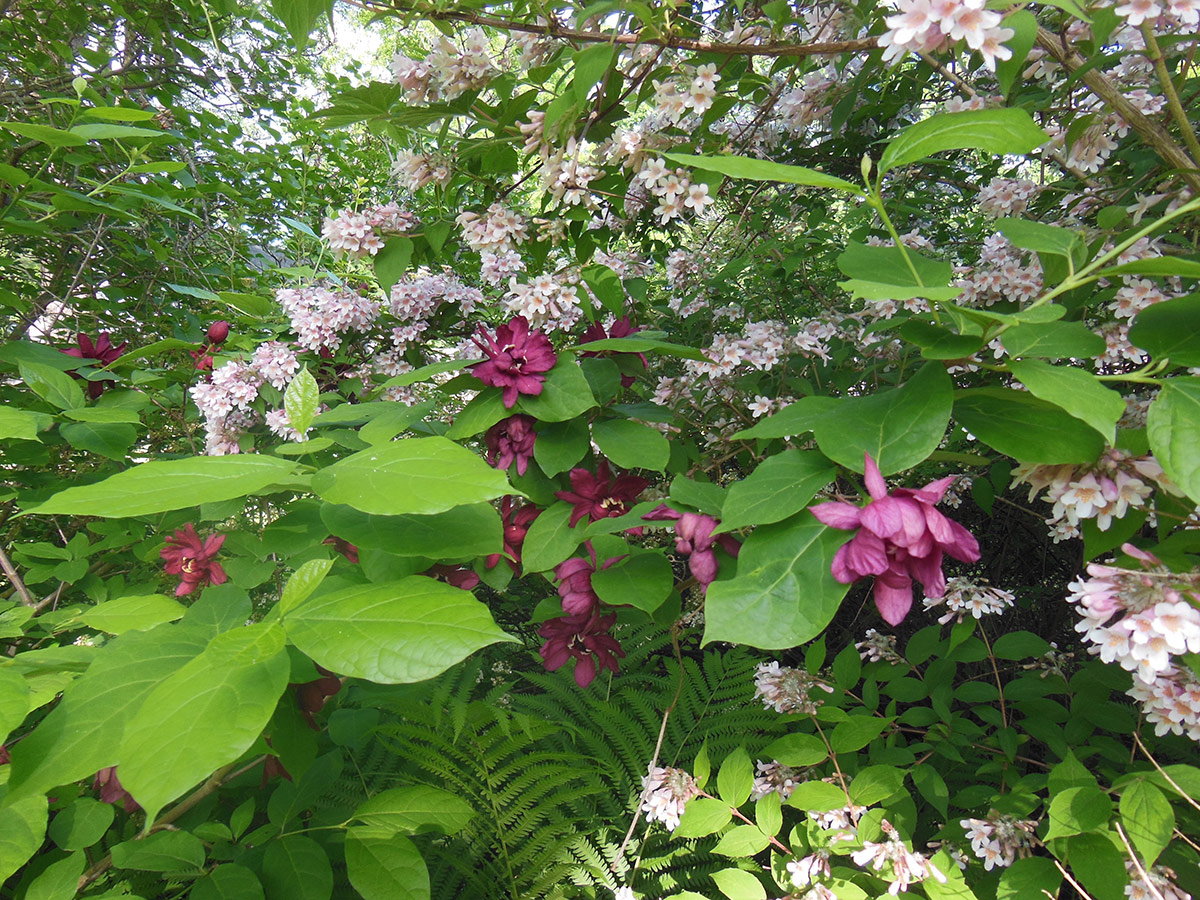 A sensational plant pairing of two very different flowering shrubs. The big, deep red blooms of ‘Hartlage Wine’ calycanthus (Calycanthus x raulstonii ‘Hartlage Wine’, Zone 5–9) are a fabulous contrast to the endless clusters of white and light pink on beautybush (Kolkwitzia amabilis, Zone 4–8).
A sensational plant pairing of two very different flowering shrubs. The big, deep red blooms of ‘Hartlage Wine’ calycanthus (Calycanthus x raulstonii ‘Hartlage Wine’, Zone 5–9) are a fabulous contrast to the endless clusters of white and light pink on beautybush (Kolkwitzia amabilis, Zone 4–8).
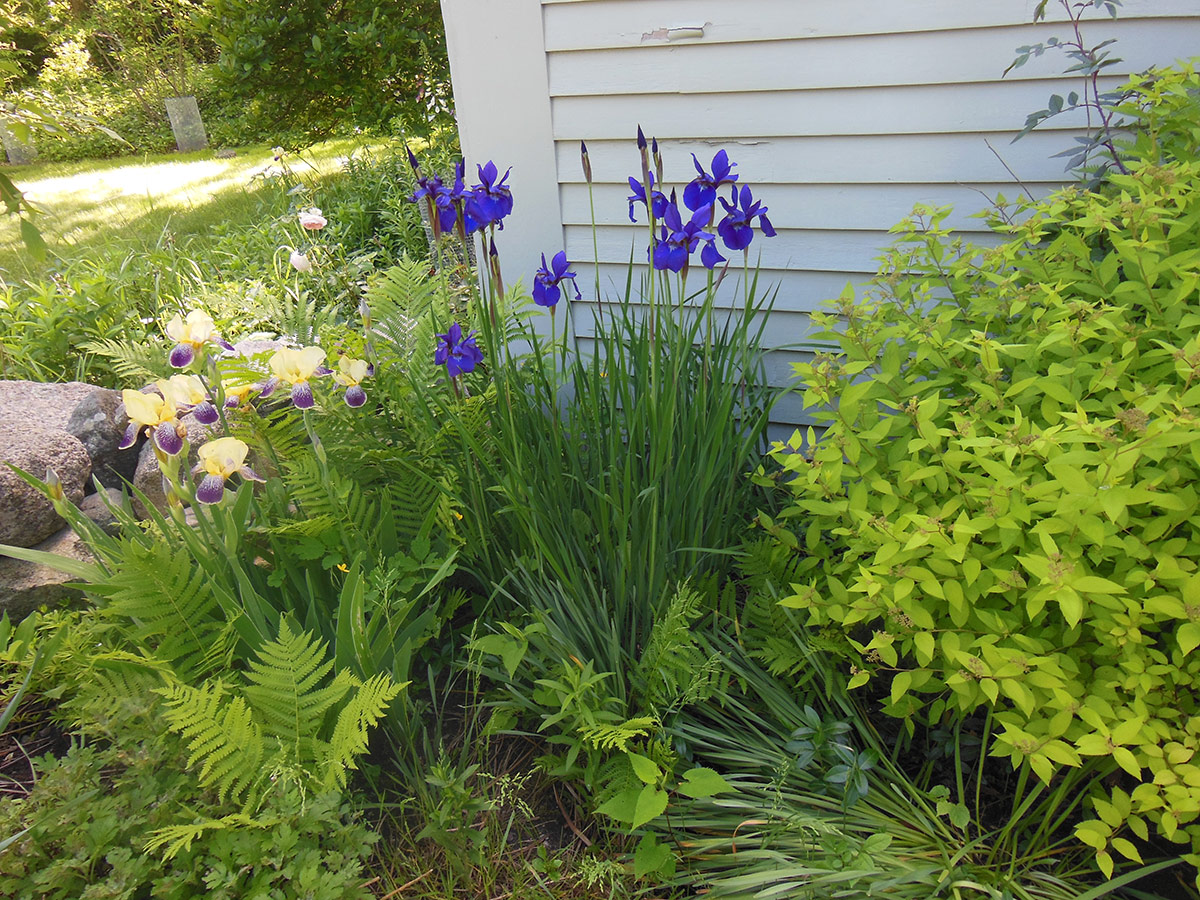 Nancy has an impressive collection of plants that bring a beautiful diversity of colors and forms, but she also repeats particular plants throughout her beds to create some cohesion. This yellow and purple bearded iris is the same as the one paired with salvia above. In this foundation planting it is paired with ‘Caesar’s Brother’ Siberian iris (Iris sibirica ‘Caesar’s Brother’, Zone 3–8).
Nancy has an impressive collection of plants that bring a beautiful diversity of colors and forms, but she also repeats particular plants throughout her beds to create some cohesion. This yellow and purple bearded iris is the same as the one paired with salvia above. In this foundation planting it is paired with ‘Caesar’s Brother’ Siberian iris (Iris sibirica ‘Caesar’s Brother’, Zone 3–8).
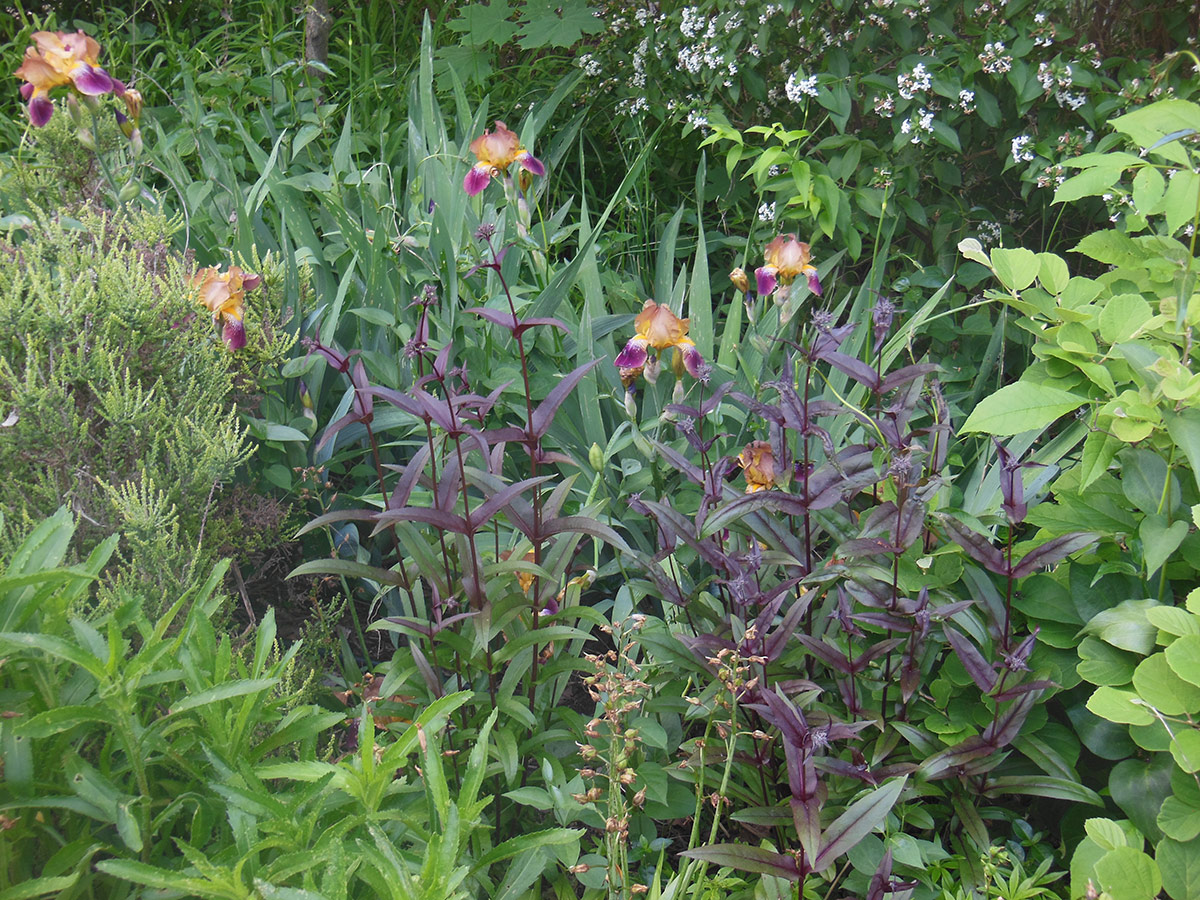 Another very similar bearded iris cultivar elsewhere in the garden gets matched with the colorful foliage of foxglove penstemon (Penstemon digitalis, Zone 3–8).
Another very similar bearded iris cultivar elsewhere in the garden gets matched with the colorful foliage of foxglove penstemon (Penstemon digitalis, Zone 3–8).
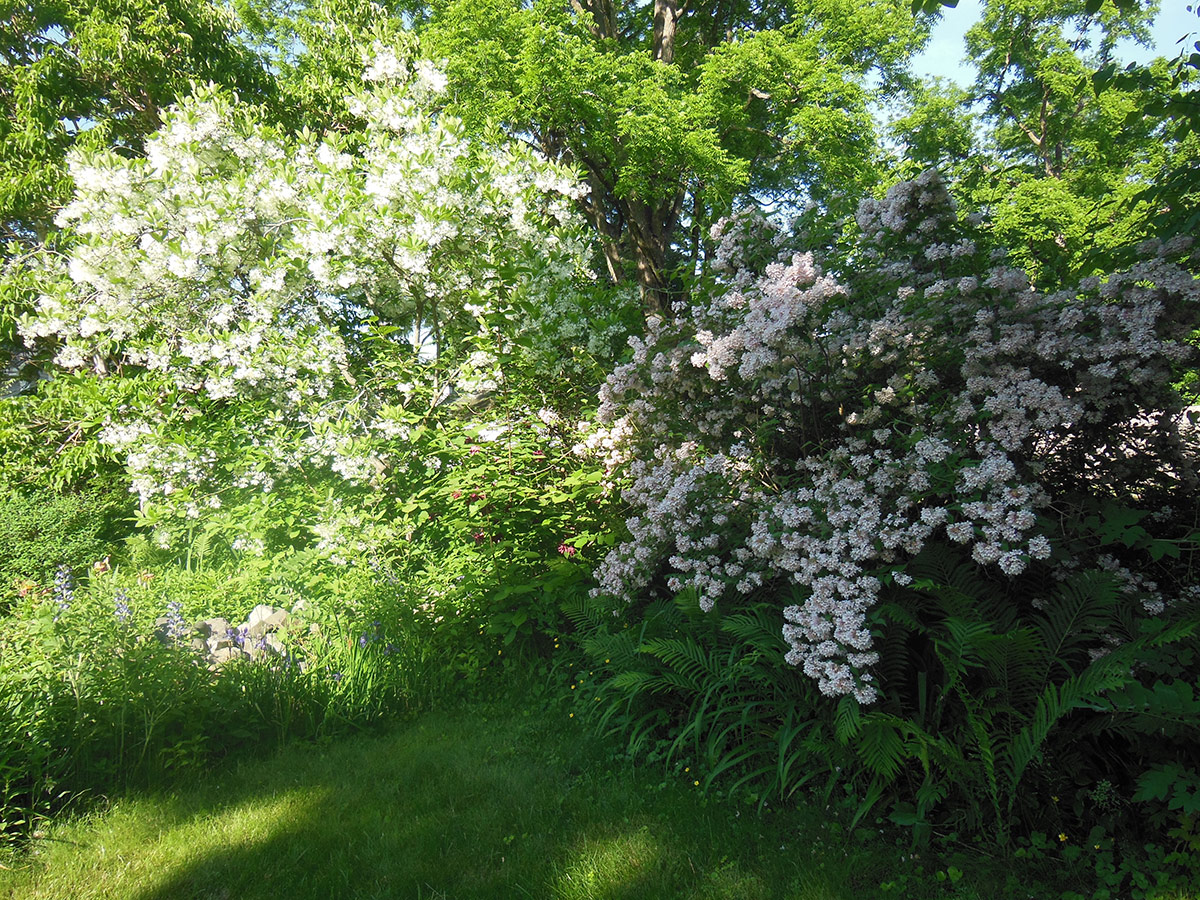 Lastly, a woodland edge absolutely filled with fluffy flowers. A fringe tree (Chionanthus virginicus, Zone 3–9) covered in white blooms on the left and kolkwitzia bringing its clusters of soft pink on the right.
Lastly, a woodland edge absolutely filled with fluffy flowers. A fringe tree (Chionanthus virginicus, Zone 3–9) covered in white blooms on the left and kolkwitzia bringing its clusters of soft pink on the right.
The list of photos that Nancy uncovered was extensive enough that we’ll be back in Massachusetts tomorrow to admire even more scenes from her gardens last year. Be sure to keep an eye out for GPOD tomorrow, so you can see even more of Nancy’s stunning blooms and plant highlights.
And if you’re sorting through old garden photos as part of your prep and plan for the growing season ahead, consider sending in a batch to the blog! Follow the directions below to submit photos via email, or send me a DM on Instagram: @agirlherdogandtheroad.
We want to see YOUR garden!
Have photos to share? We’d love to see your garden, a particular collection of plants you love, or a wonderful garden you had the chance to visit!
To submit, send 5-10 photos to [email protected] along with some information about the plants in the pictures and where you took the photos. We’d love to hear where you are located, how long you’ve been gardening, successes you are proud of, failures you learned from, hopes for the future, favorite plants, or funny stories from your garden.
Have a mobile phone? Tag your photos on Facebook, Instagram or Twitter with #FineGardening!
Do you receive the GPOD by email yet? Sign up here.
Fine Gardening Recommended Products
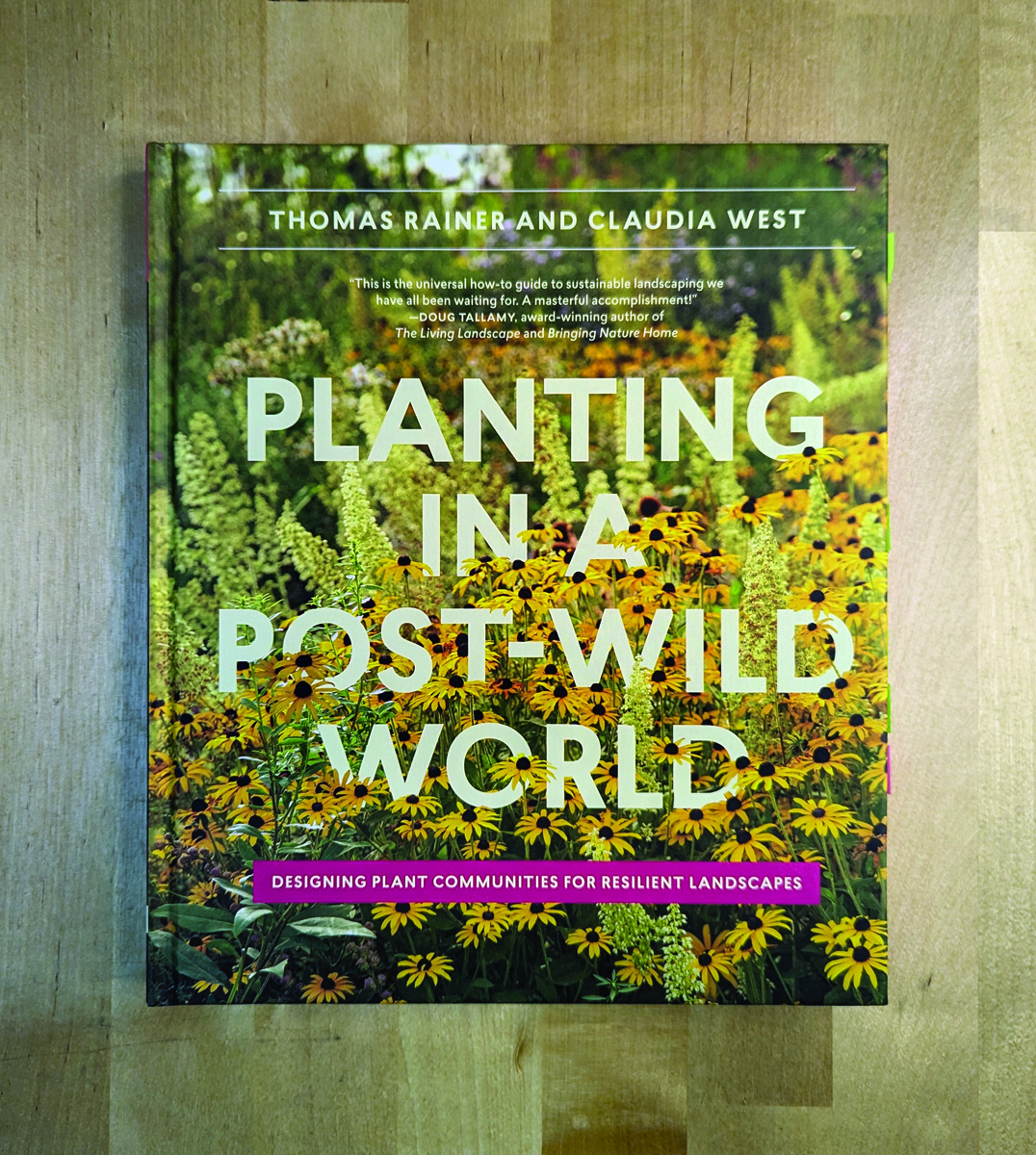
Planting in a Post-Wild World: Designing Plant Communities for Resilient Landscapes
Fine Gardening receives a commission for items purchased through links on this site, including Amazon Associates and other affiliate advertising programs.
Featuring gorgeous photography and advice for landscapers, Planting in a Post-Wild World by Thomas Rainer and Claudia West is dedicated to the idea of a new nature—a hybrid of both the wild and the cultivated—that can nourish in our cities and suburbs.
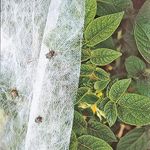
Gardener’s Supply Company Summerweight Fabric Plant Cover
Fine Gardening receives a commission for items purchased through links on this site, including Amazon Associates and other affiliate advertising programs.
Ideal for summertime pest control, this garden cover effectively screens out Japanese beetles, potato beetles, cabbage worms, leaf miners, carrot flies and most vine borers. It transmits 97.6% of the light to your plants without allowing heat build-up, and it provides cold protection down to 41° F, to extend your growing season.

ARS Telescoping Long Reach Pruner
Fine Gardening receives a commission for items purchased through links on this site, including Amazon Associates and other affiliate advertising programs.
Telescopes from 4 to 7′. Cut and Hold (160) Blades. Drop forged blades for unsurpassed long lasting sharpness. Lightweight, 2.3 lbs., for continued use. Perfectly balanced for easy pruning.

